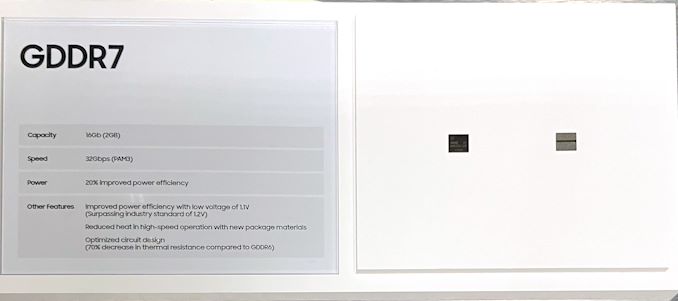Now that JEDEC has released the GDDR7 memory specifications, memory manufacturers are starting to release their first products. The first to launch this generation is Samsung, which has quietly added its GDDR7 products to its official product catalog.
Currently, Samsung lists two GDDR7 devices on its website: a 16 Gbit chip with data transfer rates of up to 28 GT/s and a data transfer rate of up to 32 GT/s (in line with the initial parts). Announced by Samsung in mid-2023). The chip adopts 512M x32 structure and is packaged in 266-pin FBGA. The chips are already sampling, so Samsung’s customers (GPU vendors, AI inference vendors, networking product vendors, etc.) should already have GDDR7 chips in their labs.
The GDDR7 specification promises a maximum capacity of 64 Gbit (8 GB) per chip and a data transfer rate of 48 GT/s. Meanwhile, the first generation of GDDR7 chips (currently released) will have a rather modest 16 Gbit (2 GB) capacity and data transfer rates of up to 32 GT/s.

In terms of performance, the memory bandwidth of the first-generation GDDR7 should be significantly higher than that of GDDR6 and GDDR6X. However, capacity/density improvements will not materialize until memory manufacturers move to next-generation EUV-based process nodes. Therefore, it is unlikely that the first GDDR7-based graphics cards will achieve any improvement in graphics memory capacity. Although looking ahead, Samsung and SK Hynix have previously told Tom’s Hardware that they intend to achieve mass production of 24 Gbit GDDR7 chips in 2025.
In addition, it is worth noting that SK Hynix also demonstrated its GDDR7 chip at NVIDIA’s GTC last week. Therefore, Samsung’s rivals should not be far behind in offering samples and eventually mass-produced memory.
Source: Samsung (via @harukaze5719)